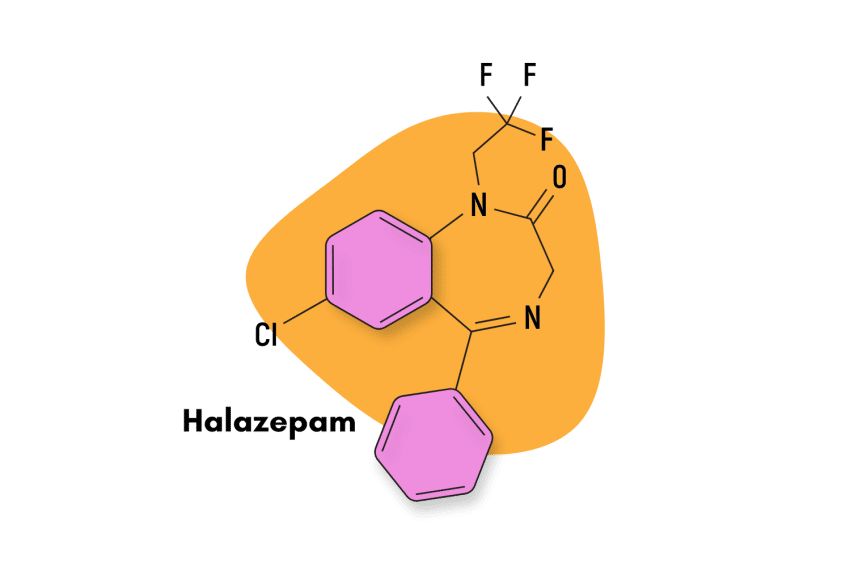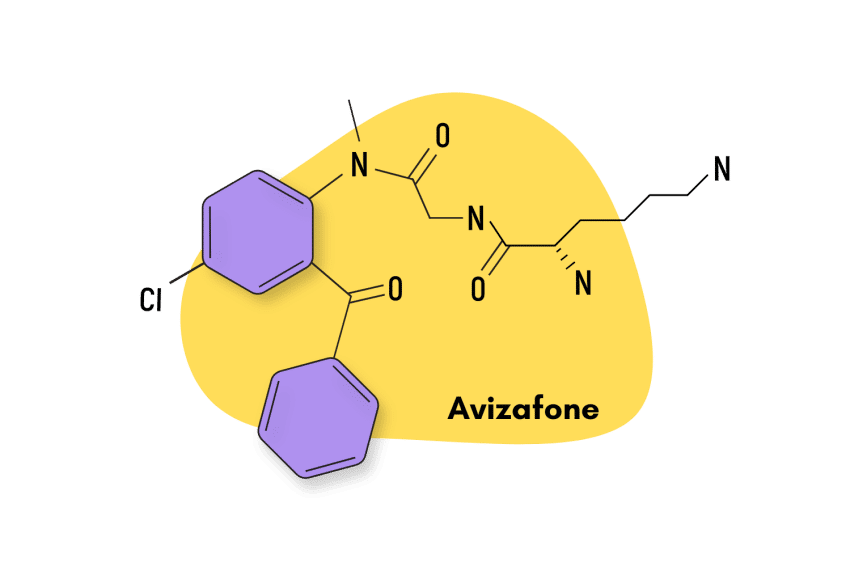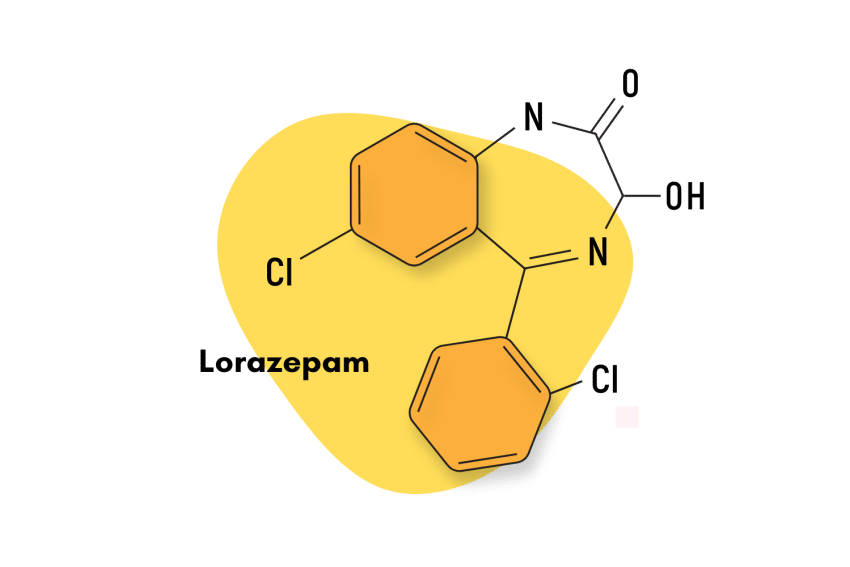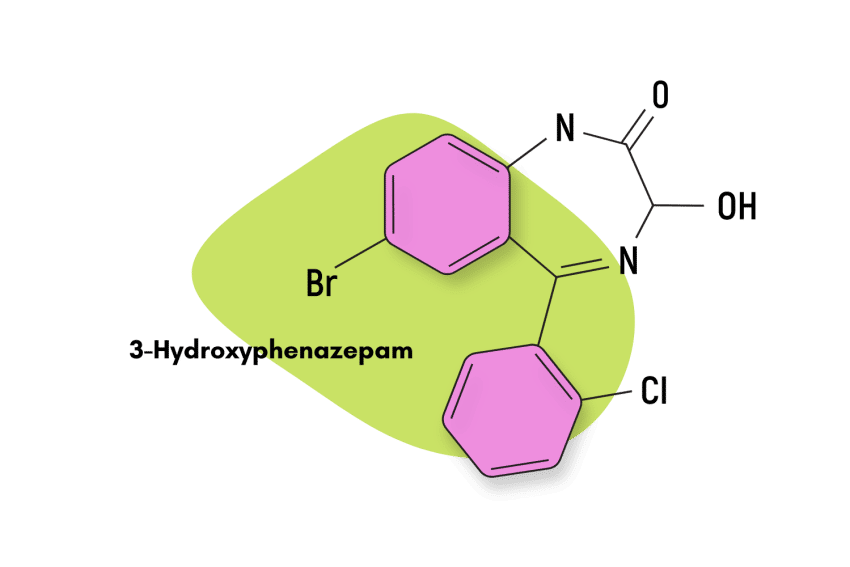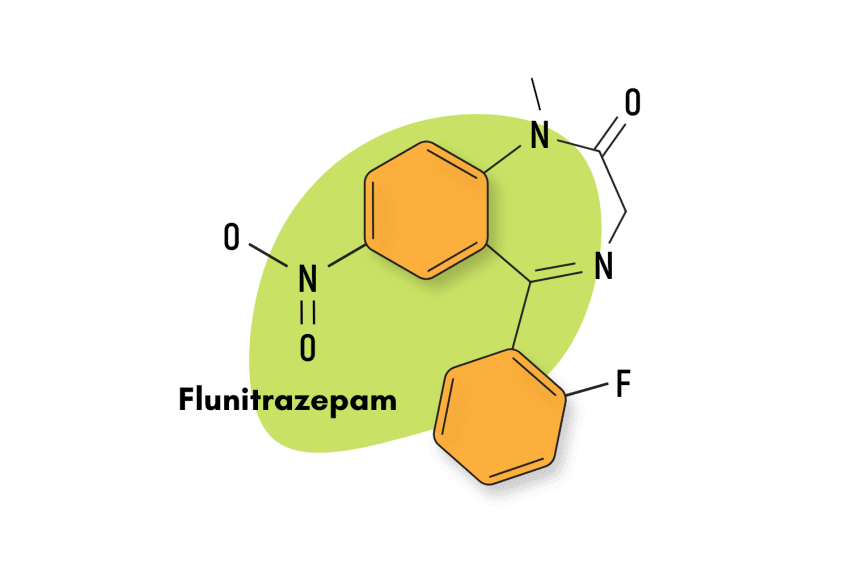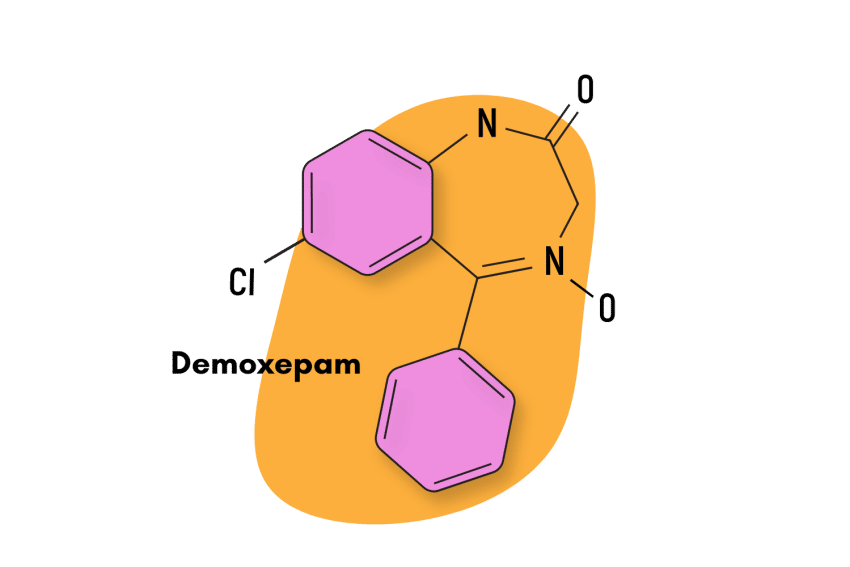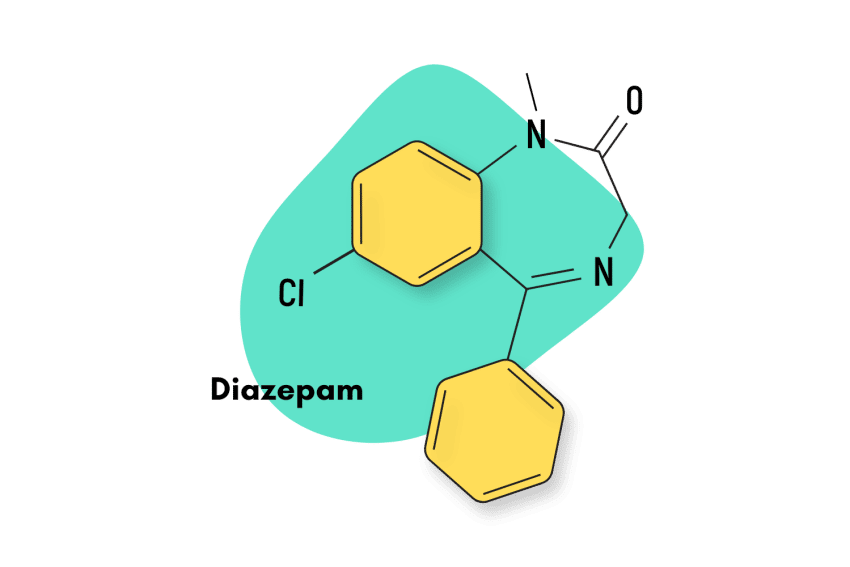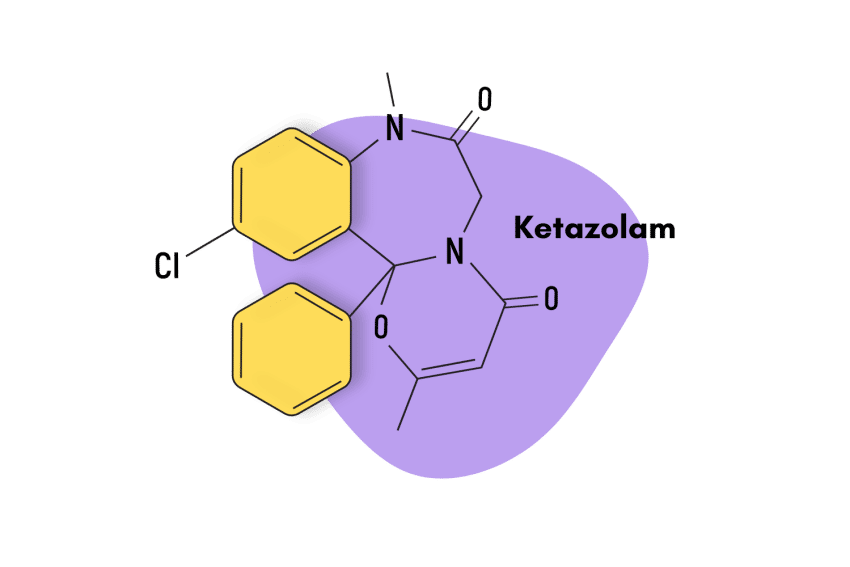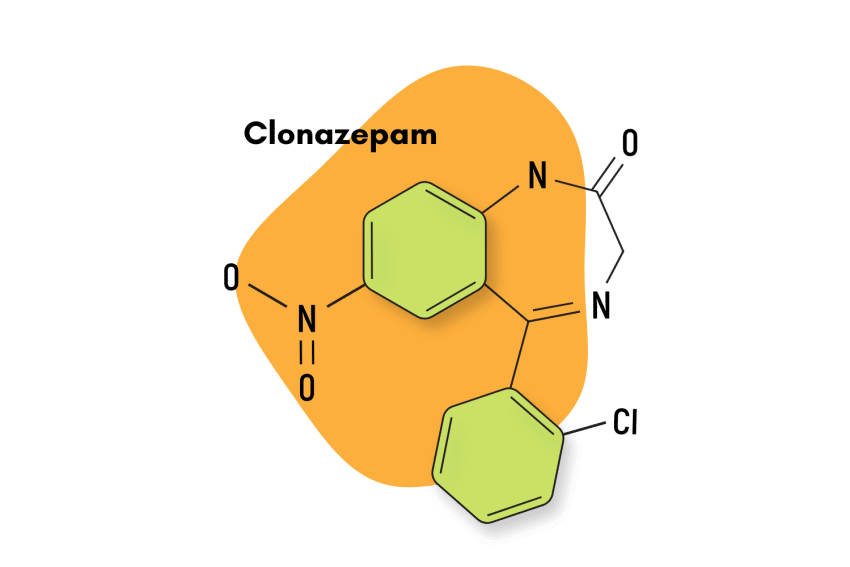Adinazolam (Deracyn): A Powerful Benzodiazepine Known For Causing Severe “Mental Unpleasantness”
Adinazolam is a benzodiazepine drug developed as a potential treatment for depression. Recently, adinazolam has been appearing on designer drug marketplaces — but here’s why you should avoid this one at all costs.
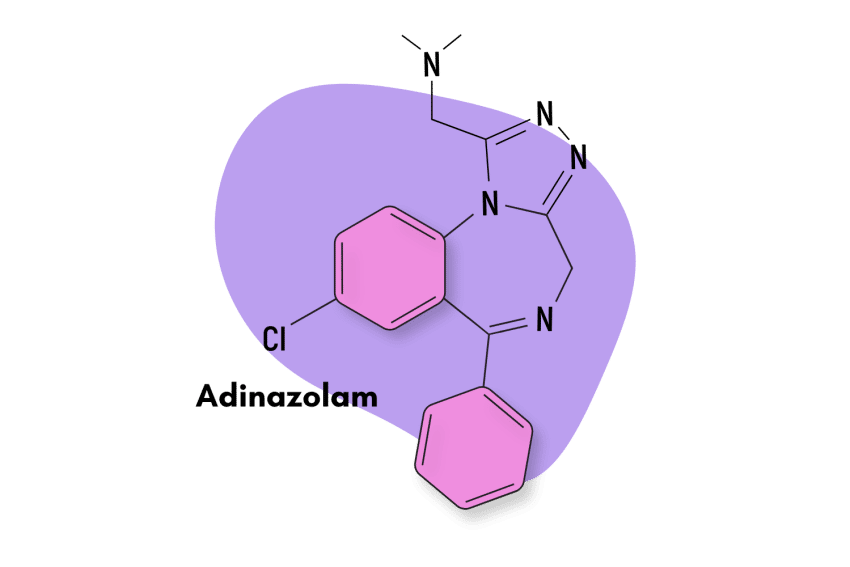
Adinazolam was initially developed to enhance the antidepressant qualities of alprazolam (Xanax). This benzodiazepine compound is a member of the triazolobenzodiazepine subclass. This benzodiazepine subgroup is known for hosting some of the most potent benzodiazepines currently known. Many members of this group also produce notable antidepressant qualities that are lacking in other subgroups.
In the case of adinazolam, this benzodiazepine was never brought to market because it tended to create intolerable side effects, a substantial degree of “mental unpleasantness” being the most cited.
Despite its uncomfortable effects, adinazolam has appeared more frequently in designer drug marketplaces over the past few years.
Adinazolam Specs
| Status | Research Chemical |
| Common Dosage | Unspecified |
| PubChem ID | 37632 |
| CAS# | 37115-32-5 |
IUPAC Name:
1-(8-Chloro-6-phenyl-4H-[1,2,4]triazolo[4,3-a][1,4]benzodiazepin-1-yl)-N,N-dimethylmethanamine
Other Names: Deracyn
Metabolism: Adinazolam is demethylated by human liver microsomes to form N-desmethyladinazolam, the primary active metabolite, while also forming secondary metabolites: alpha-hydroxyalprazolam and estazolam. The two CYP enzymes found to mediate adinazolam’s metabolism were CYP2C19 and CYP3A4 [1].
Duration of Effects: adinazolam is a short-acting compound with an elimination half-life of under three hours.
Benzodiazepine Dosage Equivalency Calculator
**Caution:** Benzodiazepines have a narrow therapeutic window. Dose equivalents may not be accurate in higher doses.
This calculator does not substitute for clinical experience and is meant to serve only as a reference for determining oral benzodiazepine equivalence.
Please consult a medical practitioner before taking benzodiazepines.
How Does Adinazolam Work?
Adinazolam is known to exert its range of sedative and anxiolytic effects through the “classical” benzodiazepine mechanism of action.
That is to say; adinazolam binds to the benzodiazepine site on GABA-A receptors. Once attached, adinazolam boosts the effects of a neurotransmitter called GABA [2]. Like other benzodiazepines, adinazolam doesn’t “activate” this receptor itself; rather, it potentiates (boosts the effects of) naturally occurring GABA.
However, it’s also important to dig into what we know of adinazolam’s particularities to get a complete picture of its pharmacological profile.
Few studies confirm the exact relation in potency, but adinazolam’s status as a triazolobenzodiazepine is highly suggestive of high potency. A human study that compared the subjective effects between diazepam, lorazepam, adinazolam, and a placebo found that adinazolam caused the highest self-reported degree of mental and physical sedation [3].
Unfortunately, researchers studying this drug also reported a high incidence of what they define as “severe mental unpleasantness” in users taking this drug.
Adinazolam’s main metabolic byproduct, N-desmethyladinazolam (also known as nordiazepam), is significant in pharmacological terms. And given that adinazolam is an extremely short-acting compound, the effects of nordiazepam within the body quickly take over after initial adinazolam ingestion. Additionally, nordazepam is one of the longest-acting benzodiazepines in existence. The clearance of adinazolam and its byproducts could take well over 200 hours.
Adinazolam has also been found to exert antidepressant effects through secondary means, like its ability to potentiate the effect of norepinephrine [4].
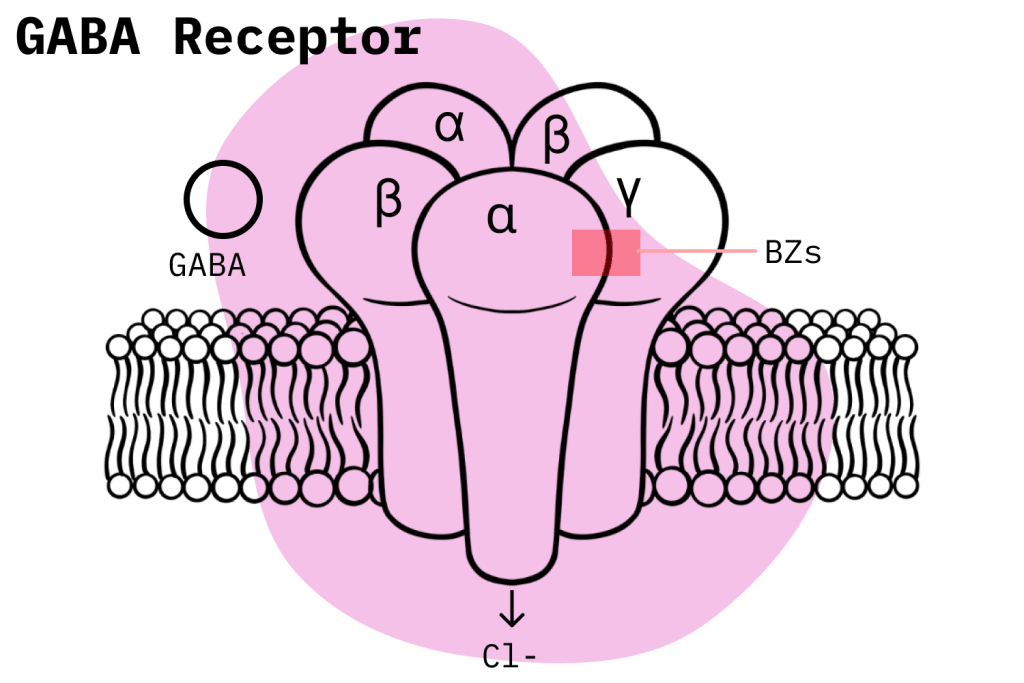
Is Adinazolam Safe? Risks & Side Effects
Even though the FDA hasn’t approved it, adinazolam’s safety profile is likely similar to that of most other benzodiazepines.
Because of their inherent similarities, benzodiazepines all share a baseline level of risk that potential users must always be aware of. Yes, there are meaningful safety differences between them, mostly relating to properties like potency and whether or not they tend to accumulate in the body with repeated dosing, but these are, on the whole, secondary concerns.
Benzodiazepine safety is mostly a matter of avoiding misuse. For example, benzodiazepines, when used alone, pose little risk for overdose — but when used in conjunction with other central nervous system depressants (like alcohol), the risk of fatal overdose increases dramatically.
The duration of use is also important. When used for only a short amount of time (2 weeks or less) is unlikely to lead to problems with dependency and addiction. However, long-term, habitual use can lead to debilitating dependency and withdrawal, making it nearly impossible to quit using the drug.
In conclusion, benzodiazepines, like all prescription drugs, are relatively safe when used as directed by a medical professional. However, risk levels tend to rise dramatically when misuse is factored into the equation.

Side Effects of Adinazolam
Studies relating to adinazolam’s side effects profile can produce conflicting results. Certain studies like the one mentioned before claim that adinazolam is more prone to adverse effects when compared to other benzodiazepines. Other studies claim its side effects are generally mild and transient [2].
We can probably take the FDA’s refusal to license adinazolam as a sign that it probably has a significant side effects profile.
However, we also know that benzodiazepines all share a common set of adverse effects, so it’s probably a matter of greater side effect intensity than anything else.
Common benzodiazepine side effects include:
- Blurred vision
- Confusion
- Constipation
- Dizziness
- Drowsiness
- Dry mouth
- Light-headedness
- Memory problems
- Muscle weakness
- Nausea (feeling sick)
- Slurred speech
- Unsteadiness (especially in older people, who may fall and experience injuries)
Some less common side effects of benzodiazepines include:
- Changes in sexual desire
- Difficulty urinating
- Digestive disturbances
- Headaches
- Incontinence (loss of bladder control)
- Increased saliva production
- Low blood pressure
- Rashes
- Sight problems, such as double vision
- Tremors (shaking)
Benzodiazepine Withdrawal & Dependence
It’s common knowledge at this point that benzodiazepine use carries the possibility of causing physical dependence, as well as the associated withdrawal symptoms that come with it. This possibility is so prevalent that it’s one of the factors that current and potential benzodiazepine users should protect themselves against.
Practically, this means limiting their benzodiazepine use as much as possible.
Users should know that benzodiazepines are pretty serious —only benzodiazepine and alcohol withdrawals can potentially become fatal. This is because tolerance to benzos implies reduced GABA receptor activity, and when sudden cessation of benzodiazepines happens, it can lead to a failure of the neurological system to regulate hyperactive states.
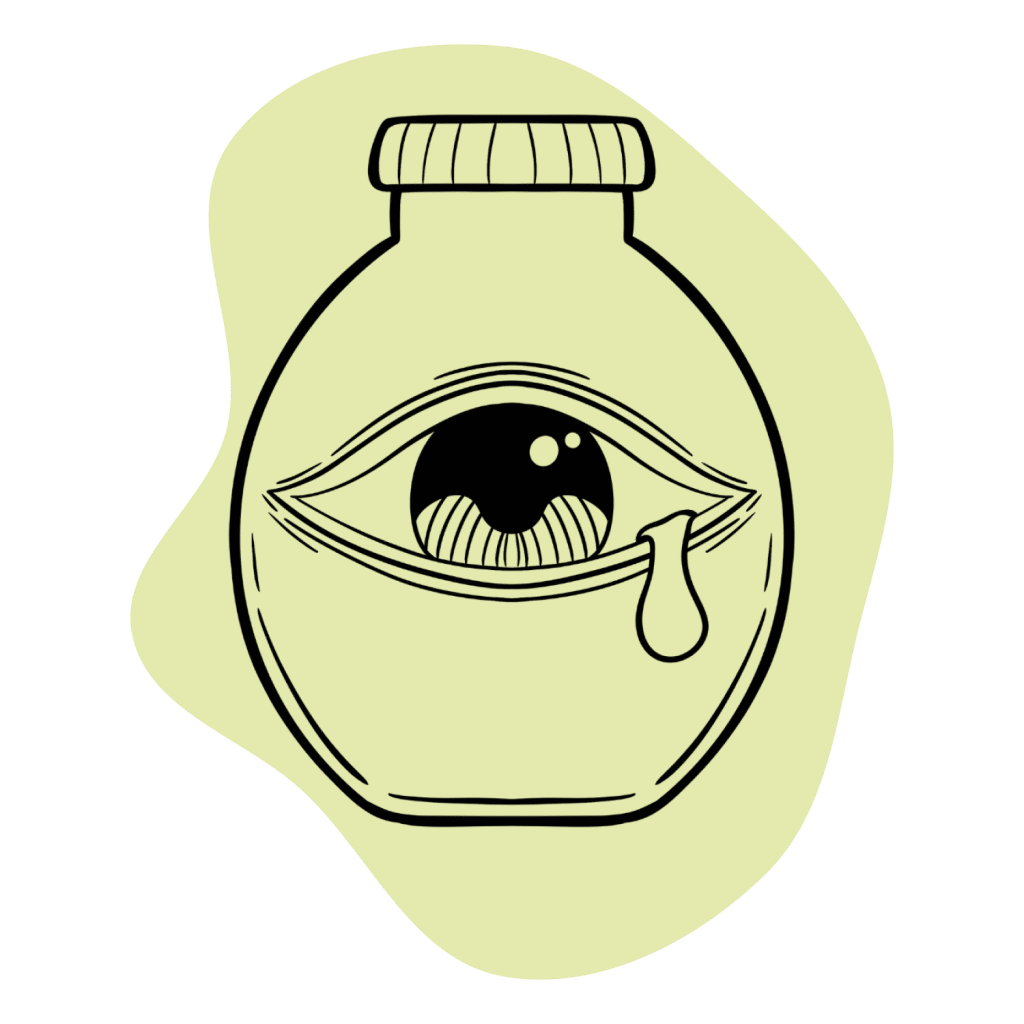
Harm Reduction: Adinazolam
We want benzodiazepine users, both recreational and prescription, to stay as safe as possible. And with this goal in mind, we’ll be providing some useful tips in this section to help them cut down on risk.
When it comes to prescription users, the name of the game is to avoid misuse of any kind. This mainly implies sticking closely to your prescription’s instructions: no slight alterations to dosage, no switching formulation, and nothing of that nature. If you have a question, you should contact your doctor directly.
The best tip for recreational users is to never combine potent pharmacological products, which raises the likelihood of a serious health event. Furthermore, it’s always a good idea to let a friend know if you plan on using drugs — especially in higher doses or for the first time.
Harm Reduction Tips For Benzodiazepines:
- 🥣 Don’t mix — Mixing benzodiazepines with other depressants (alcohol, GHB, phenibut, barbiturates, opiates) can be fatal.
- ⏳ Take frequent breaks or plan for a short treatment span — Benzodiazepines can form dependence quickly, so it’s important to stop using the drug periodically.
- 🥄 Always stick to the proper dose — The dosage of benzos can vary substantially. Some drugs require 20 or 30 mg; others can be fatal in doses as low as 3 mg.
- 💊 Be aware of contraindications — Benzodiazepines are significantly more dangerous in older people or those with certain medical conditions.
- 🧪 Test your drugs — If ordering benzos from unregistered vendors (online or street vendors), order a benzo test kit to ensure your pills contain what you think they do.
- 💉 Never snort or inject benzos — Not only does this provide no advantage, but it’s also extremely dangerous. Benzos should be taken orally.
- 🌧 Recognize the signs of addiction — Early warning signs are feeling like you’re not “yourself” without the drug or hiding your habits from loved ones.
- ⚖️ Understand the laws where you live — In most parts of the world, benzodiazepines are only considered legal if given a prescription by a medical doctor.
- 📞 Know where to go if you need help — Help is available for benzodiazepine addiction; you just have to ask for it. Look up “addiction hotline” for more information about where you live. (USA: 1-800-662-4357; Canada: 1-866-585-0445; UK: 0300-999-1212).
Adinazolam Drug Interactions
Adinazolam, as well as all other benzodiazepines, should never be mixed with other compounds that can depress the central nervous system. This combination can lead to respiratory depression and is the main culprit in the exponential increase in overdose deaths in the United States in recent years.
The most dangerous combinations with benzodiazepines are alcohol, GHB, phenibut, barbiturates, Z-drugs, or any other sedative drugs.

Adinazolam Contraindications
Contraindications refer to situations where the drug should be avoided at all costs. This includes certain medical conditions, age limits, and more.
Common contraindications for benzodiazepines in general include:
- Bronchitis
- Chronic obstructive pulmonary disease (COPD)
- Conjunctive use of barbiturates, opiates, or those suffering from alcoholism
- Intellectual disabilities due to frequent paradoxical reactions
- Major depression
- Myasthenia gravis
- Over the age of 65 (high risk of side effects)
- Personality disorders
- Sleep apnea
- Pregnancy
- Lactation
Additionally, benzodiazepines that have strong hypnotic effects can be contraindicated for driving and the use of heavy machinery.
Similar Benzodiazepines to Adinazolam
Since adinazolam is unavailable on the market, here are some similar compounds!
Alprazolam (Xanax)
Alprazolam (Xanax) is one of the most popular antidepressant benzodiazepines out there and is frequently compared to adinazolam in medical journals. Both compounds have very similar pharmacology and only slight differences in pharmacokinetics. The most significant difference would probably be in side effects, with alprazolam having a more benign profile.
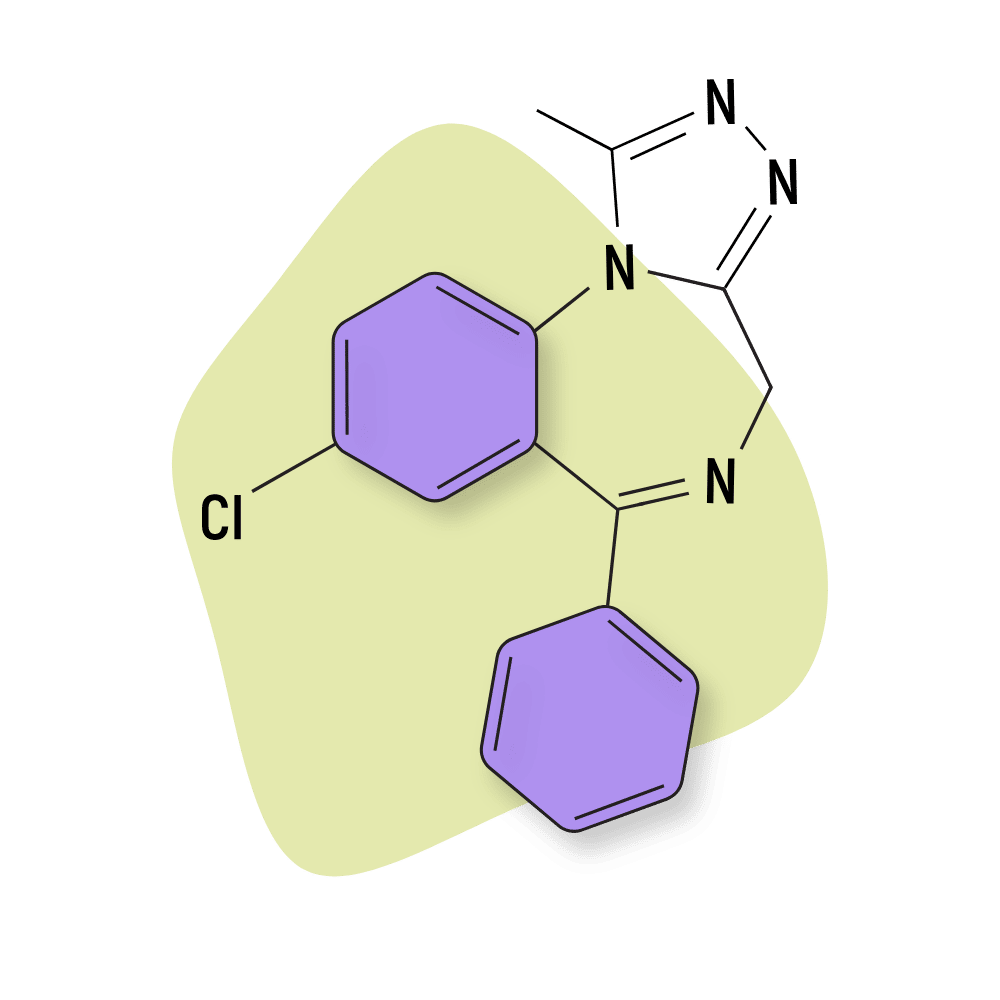
Diazepam (Valium)
Even though it’s not a triazolobenzodiazepine, diazepam (Valium) has roughly the same pharmacology as adinazolam, although with a reduced potency and longer effects. However, these compounds are known to produce nordiazepam as an active metabolite, which means that after the initial metabolic conversion, they are almost identical.
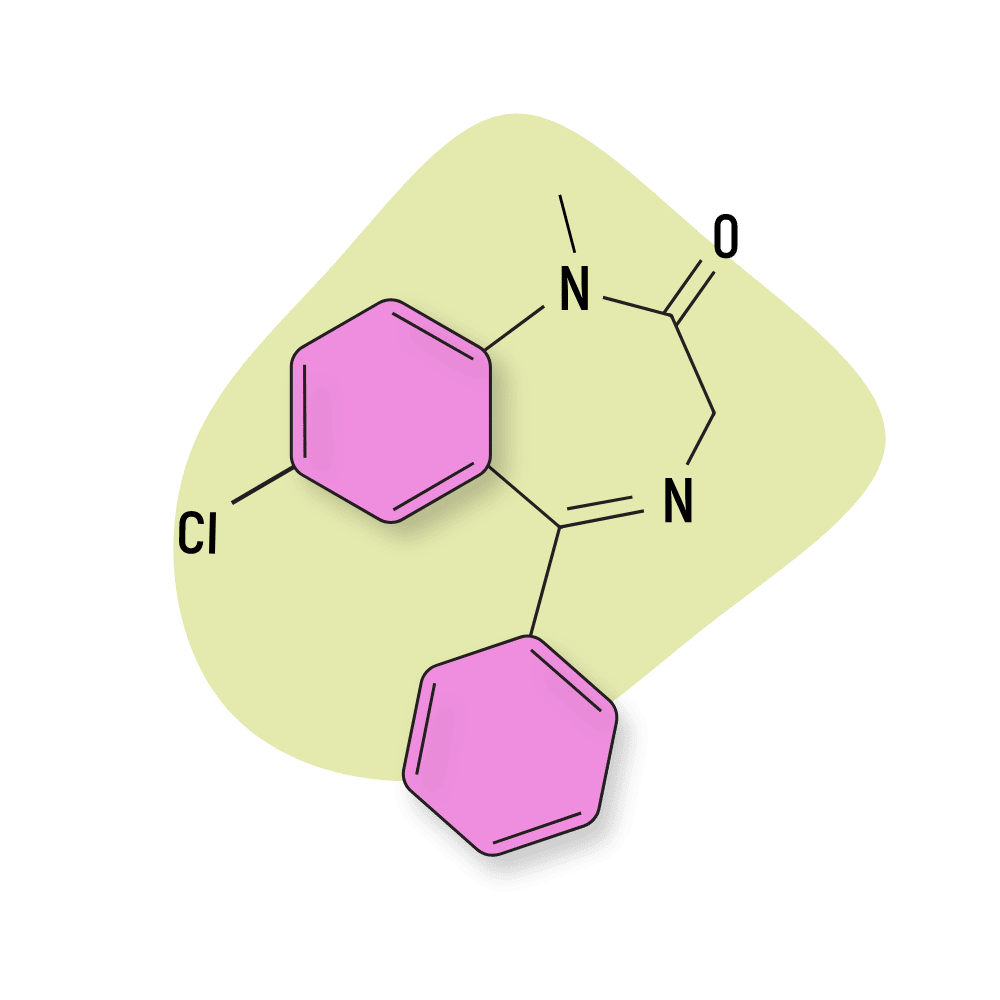
Natural Alternatives to Benzodiazepines
No natural product is going to be as strong as prescription benzodiazepines — but there are a few herbs that come pretty close.
St. John’s Wort
St. John’s Wort is a flowering shrub with specific active ingredients that have been recognized for effectiveness in fighting depression. Several studies have confirmed its ability to treat mild to moderate depression, with some claiming it is as effective as prescription antidepressants [5].
However, St. John’s Wort should never be used in combination with benzodiazepine drugs or other prescription medications. This plant has a potent effect on neurotransmitters in the brain and carries a high risk of adverse reactions when mixed with other psychoactive compounds.
Valerian Root
Valerian root is also a natural compound with potent anxiolytic qualities. These attributes arise from active ingredients that interact with GABA receptors, although not in the allosteric way of benzodiazepines [6]. Unlike prescription benzodiazepines, valerian root is much less prone to cause significant side effects.
References
- Venkatakrishnan, K., Von Moltke, L. L., Duan, S. X., Fleishaker, J. C., Shader, R. I., & Greenblatt, D. J. (1998). Kinetic characterization and identification of the enzymes responsible for the hepatic biotransformation of adinazolam and N-desmethyladinazolam in man. Journal of pharmacy and pharmacology, 50(3), 265-274.
- Dunner, David., Myers, J., Khan, Arifulla A., Avery, D. A. V. I. D., Ishiki, D. E. A. N., & Pyke, R. O. B. E. R. T. (1987). Adinazolam—a new antidepressant: findings of a placebo-controlled, double-blind study in outpatients with major depression. J Clin Psychopharmacol, 7(3), 170-172.
- M. Bird; D. Katz; M. Orzack; L. Friedman; E. Dessain; B. Beake; J. McEachern; J. Cole (1987). “The Abuse Potential of Adinazolam: A Comparison with Diazepam, Lorazepam and Placebo” (PDF). NIDA Research Monograph No. 81. Archived from the original (PDF) on 2016-12-22. Retrieved 2015-12-17.
- Lahti, R. A., Sethy, V. H., Barsuhn, C., & Hester, J. B. (1983). Pharmacological profile of the antidepressant adinazolam, a triazolobenzodiazepine. Neuropharmacology, 22(11), 1277-1282.
- Ng, Q. X., Venkatanarayanan, N., & Ho, C. Y. X. (2017). Clinical use of Hypericum perforatum (St John’s wort) in depression: A meta-analysis. Journal of affective disorders, 210, 211-221.
- Patočka, J., & Jakl, J. (2010). Biomedically relevant chemical constituents of Valeriana officinalis. Journal of applied biomedicine, 8(1), 11-18.

